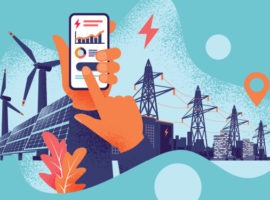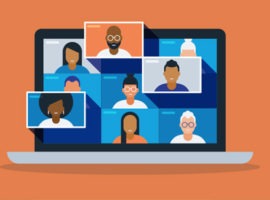The customer experience in manufacturing: Taking cues from utilities
 Manufacturers can improve CX taking lessons from utility companies, which have leveraged innovative technologies to meet customer needs.
Manufacturers can improve CX taking lessons from utility companies, which have leveraged innovative technologies to meet customer needs.
Today, the manufacturing B2B space is becoming more and more “consumerized.” B2B customers expect consumer-like experiences – and those experiences are powered by the data your company collects.
Customer data fuels every aspect of the modern B2B customer experience in manufacturing:
Let’s take a look at how manufacturers can leverage customer data to improve CX and win over today’s buyers.
 Manufacturers can improve CX taking lessons from utility companies, which have leveraged innovative technologies to meet customer needs.
Manufacturers can improve CX taking lessons from utility companies, which have leveraged innovative technologies to meet customer needs.
It’s 2021. No customer should have to contact a sales rep to buy a product, not even in B2B.
Your B2B customers bring their own experiences from the business-to-consumer space. How they shop on global marketplaces and at their favorite online retailers is shaping the way they perceive their experience with your company.
Just because they’re buying B2B doesn’t mean they will excuse outdated experiences, whether it’s a lackluster buyer portal or a nonexistent mobile site.
The first thing many B2B buyers look for today is self-service. They want to be able to buy your products how and when they want them. Increasingly, that means they’re buying new machinery or aftermarket products with just a few taps on their mobile phone.
Other customers are beginning to expect subscription-based purchasing and services, meaning they’ll receive your offerings on a regular schedule that suits them best.
In any case, your ability to quickly serve these B2B customers relies on data: past purchases, inventory availability, customer service interactions, and even unstructured data such as social media engagement and chat history.
 The same consumers who expect personalized B2C experiences are B2B buyers. Companies must create a B2B CX that meets their needs.
The same consumers who expect personalized B2C experiences are B2B buyers. Companies must create a B2B CX that meets their needs.
At worst, businesses view aftermarket as a separate market entirely. At best, you may see aftermarket as a complicated, siloed part of your company. When you don’t embrace the aftermarket opportunity, you run the risk of losing out to global third-party competitors.
So, begin rebuilding your sales process with the aftermarket in mind. How can you fold aftermarket offerings into your CX? This shift in thinking needs to come from the very top.
It sounds nice to say you’re encouraging your salespeople to focus on the aftermarket, but you need to provide them with the tools and technology – both of which are grounded in customer data – to better serve customers in the aftermarket.This requires that you know your customer and can synthesize all of the purchase and contact data available to make aftermarket products and services visible and available. Customers shouldn’t have to go searching all over your website or their buyer portal to find your aftermarket offers.
Chances are, if someone is looking for an aftermarket product, it’s because their machinery stopped working. You don’t want to keep these customers waiting, because the aftermarket experience is still a reflection of their overall experience with your company.
It doesn’t look good if a third-party company can fix your machinery faster and easier than you.
The internet of things (IoT) can give you a massive advantage over your third-party competitors. With IoT, you can remotely monitor the machines you’ve sold to keep tabs on when they may need new parts or servicing.
You and your customers can both get deep insight into machine performance, which you can use to inform your sales approaches. Knowing how often your products need service and maintenance can be a valuable sales pitch for other customers.
IoT is one way to provide hyperpersonalization, or offers and services tailored specifically to your customer. Any customer data you gather is deeply valuable – whether it’s machine performance insights from IoT or marketing data based on customer feedback and outreach.
You can use these insights to provide your customers with what they want, when they want it, and avoid annoying them them with irrelevant promotions or offerings.
Customers know you collect their data. In return, they expect you to use that data to better serve them. Customers today can tell when you’re not making the most of their data, and it’s obvious when you’re sending them coupons for products or services that aren’t relevant to their business.
Down to the prices of your products, your business should be able to offer customers personalized experiences based on the data you’ve gathered from them.
 Digital personalization has a single, simple goal: Get the right content to the buyer at the right time to influence buying decisions. But B2B personalization is trickier than B2C. Find out how to do it right.
Digital personalization has a single, simple goal: Get the right content to the buyer at the right time to influence buying decisions. But B2B personalization is trickier than B2C. Find out how to do it right.
For instance, your customers should be able to use their computer to look up the shipping status of a product they just ordered. That goes without saying.
But can your customers find that same information quickly and easily on their phone when they’re standing on the shop floor away from their desk? Or, better yet, can you send a change in status directly to their phone with a push notification?
To create this level of consistency, you need the right technology to take in the enormous amounts of data created by B2B customers and to build a strong foundation for your CX solutions.
From there, your ability to enable self-service purchasing, improve your aftermarket offerings, and provide hyperpersonalization can fall into place.